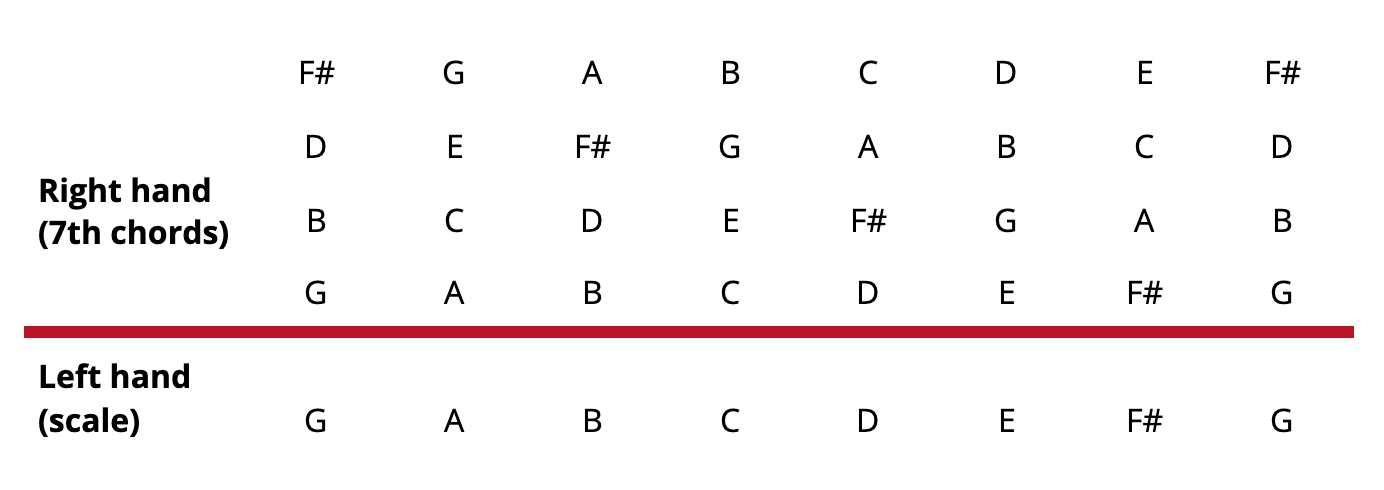Sometimes, deciding on what to practice is harder than practicing itself…
If you don’t have a lot of time and want to maximize the time you do have, this lesson is for you.
In this lesson, I’ll teach you a piano practice routine that incorporates scale practice and chord practice. And the good news is, it’s a lot more fun than just playing scales up and down.
Plus, you’ll familiarize yourself with the technical ingredients required to bake your own creative piano-cake!
We’ll be doing this in G major today (1 sharp = F#!), but you can play this exercise in any key you’d like. Let’s get started.
First, we’ll play the G major scale on our left hand and diatonic triads on our right. This means we’ll play three-note triads on top of each note.
Written out, here are the notes you’ll play:

If you don’t know how to play scales with the fly-over/cross-under technique yet, check out this lesson.
I played the triads broken (notes apart) because I like the sound of broken chords, but you can play them solid (notes together) or broken. Your choice.
Try going both up and down the scale. If you’re up for a challenge, switch hands!
Next, we’ll up the ante and play seventh chords on our right hand instead. Here are the notes written out:

As you can see, playing seventh chords is just a matter of stacking one more note on top of your existing triad, a third above the highest note.
You might notice that seventh chords add a dreeeeeaamy feel to your scale practice. And if you think it sounds jazzy, you’re on to something — seventh chords are a key feature of jazz chord theory.
⁉️🎹 What’s a half-diminished chord? You’ll see that we run into a half-diminished 7th chord. This is a normal min7 chord but with a flattened (diminished) fifth. Learn more about funny 7th chords here.
So, why should we spend precious practice time on scales and chords?
It’s because scales and chords are the ingredients to creating and playing songs on the piano. Scales and chords help us quickly chord a song and add riffs and fills.
The hand shapes used in scales and chords also strengthen your fingers and develop your dexterity. It may not feel like much in one practice session, but if you keep playing chords and scales, you’ll be able to learn new songs faster and play faster.
Chords are scales are like the ingredients to making a piano-cake 🎂
We hope this practice routine helps on those days when you don’t know what to practice, or only have a few minutes! Happy practicing 🙂
Lisa Witt has been teaching piano for more than 20 years and in that time has helped hundreds of students learn to play the songs they love. Lisa received classical piano training through the Royal Conservatory of Music, but she has since embraced popular music and playing by ear in order to accompany herself and others. Learn more about Lisa.
/marketing/pianote/promos/april/banner-bg-m.webp)
We use cookies for traffic data and advertising. Cookie Policy »
/marketing/pianote/promos/april/banner-title.webp)